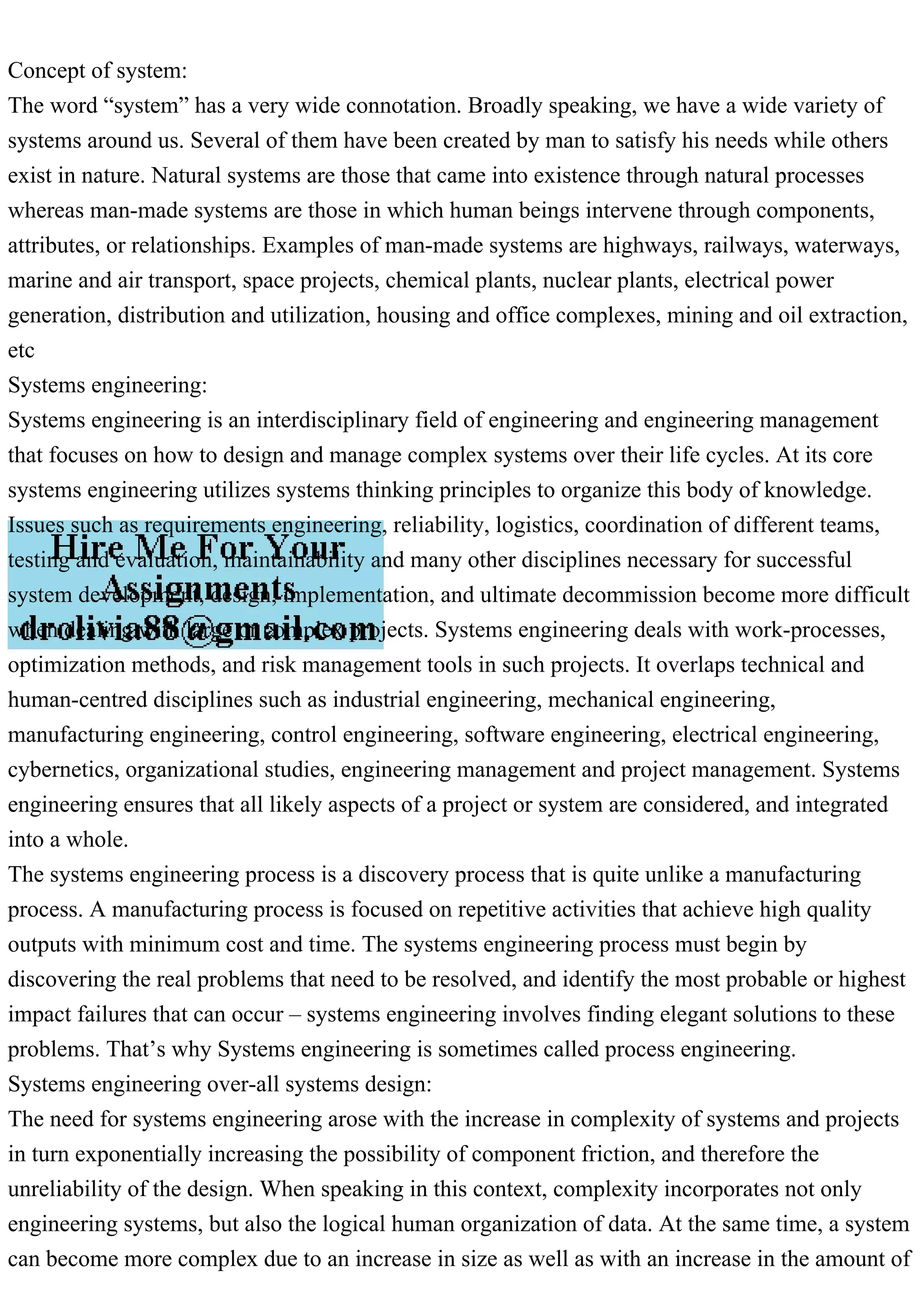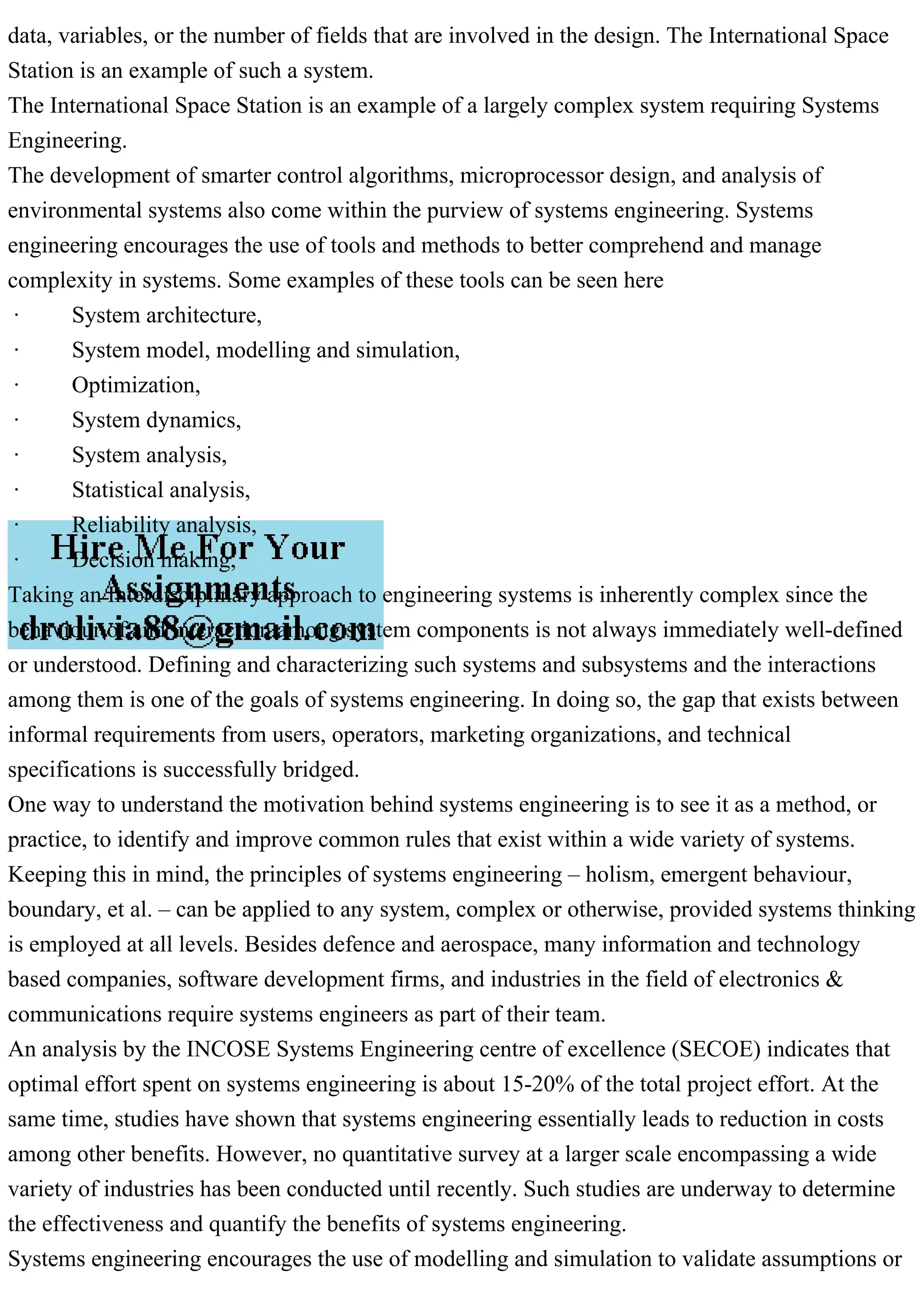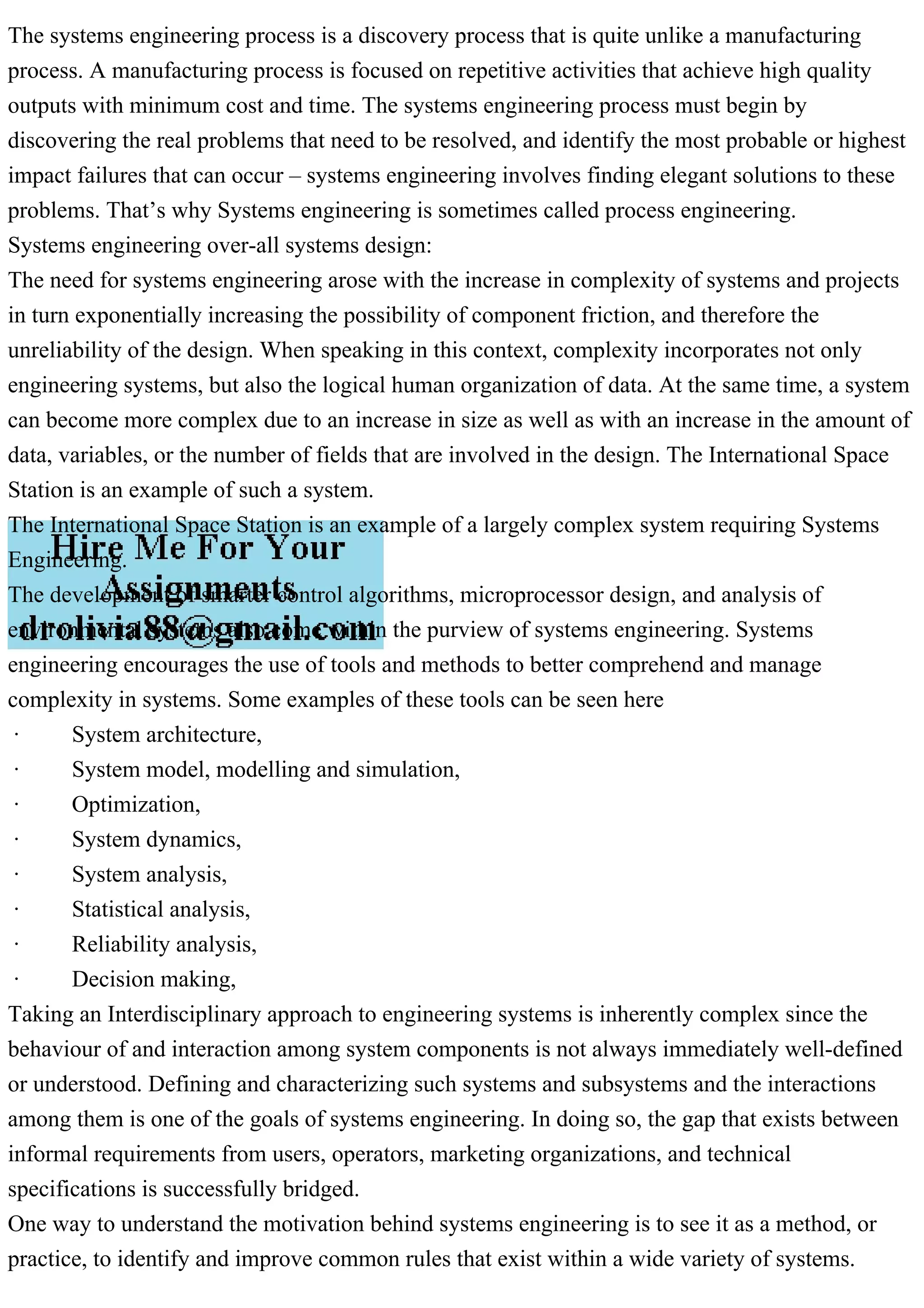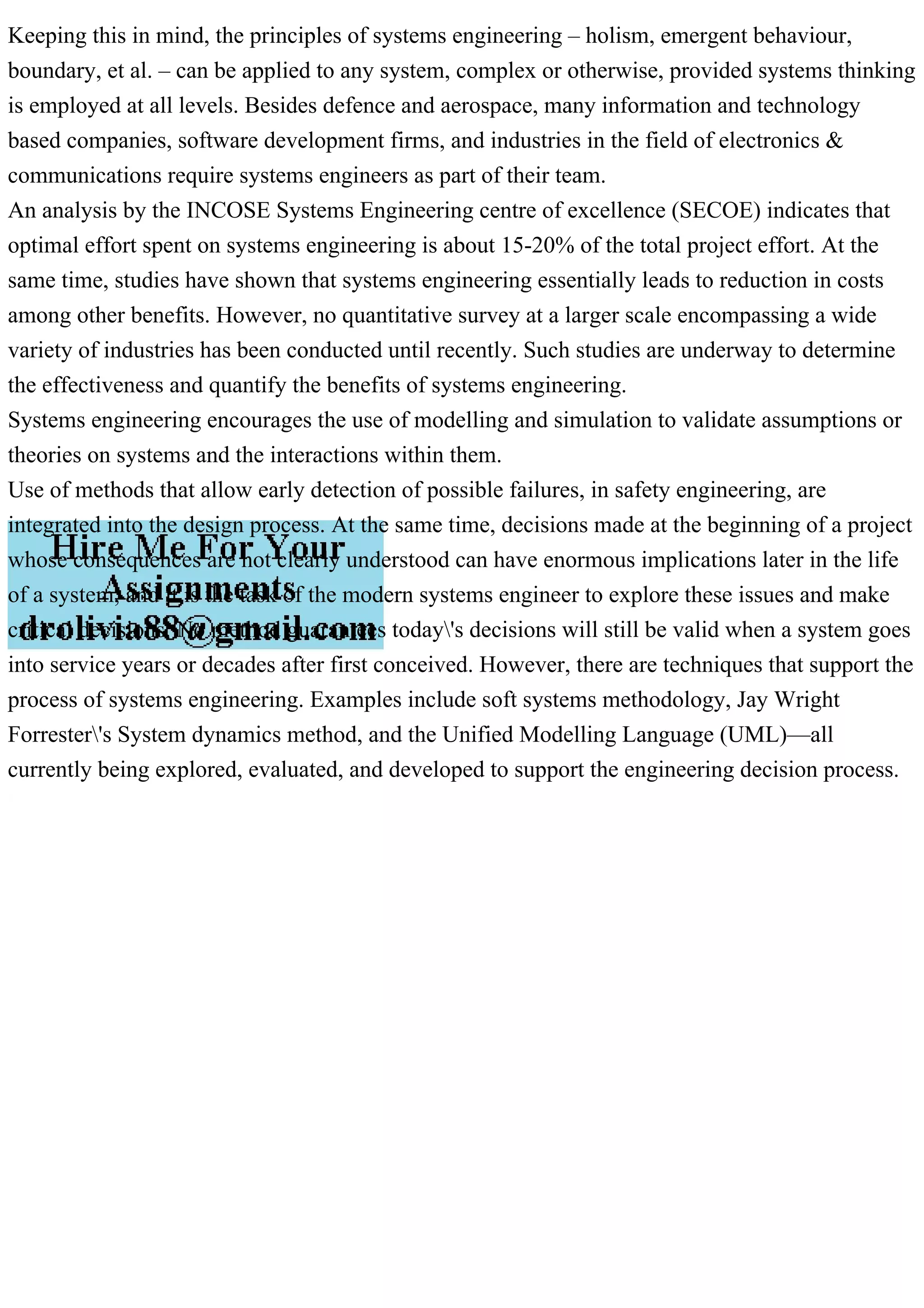The document discusses the concept of 'system' and distinguishes between natural and man-made systems while detailing systems engineering as an interdisciplinary field focused on designing and managing complex systems throughout their life cycles. It emphasizes the importance of systems thinking and various tools and methods to handle complexity, reliability, and coordination in projects, highlighting real-world applications such as the International Space Station. Additionally, it mentions the benefits and ongoing studies on the effectiveness of systems engineering across different industries.




